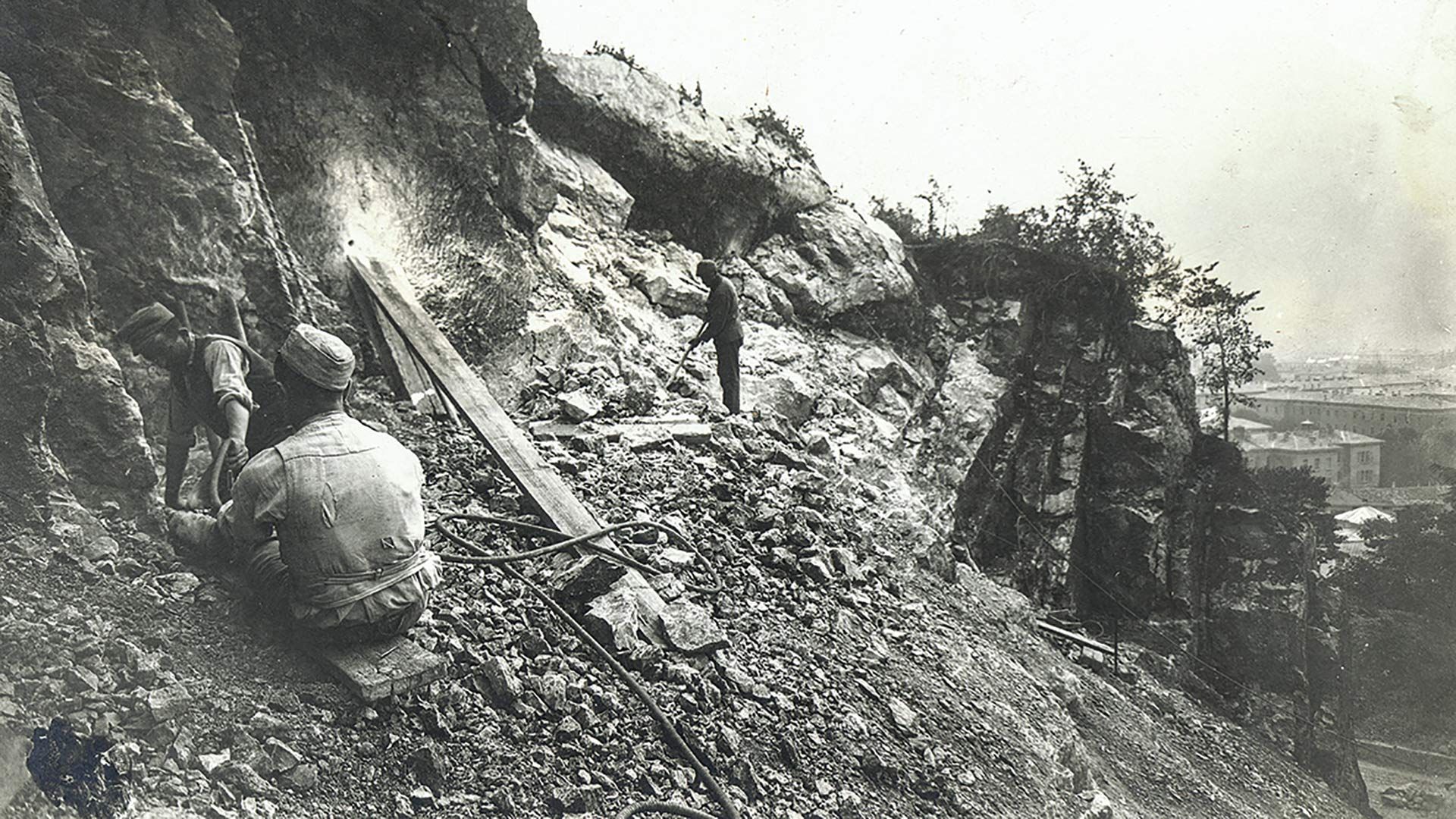
Along the paths of Trento's fortress
Trekking routes to discover the sites and fortifications of the First World War
During the nineteenth century the city of Trento was transformed into a large stronghold, surrounded by a belt of forts. The territory was divided into sectors: from 1914 the defensive system was divided into seven sectors. A further fortified line included the immediate surroundings of the urban center. Other more external field defense lines protected the Fortress, including the barrier of Tenna, in Valsugana, with the strong Colle delle Benne or San Biagio and the fort of Tenna. At the outbreak of the war the nineteenth-century fortifications were outdated and inadequate to face a possible attack: some were therefore disarmed and replaced by field posts placed nearby, others were demolished. Between 1914 and 1916 an imposing entrenched camp with a very high degree of resistance, consisting of trenches, cave batteries and concrete casemates, enclosed the city: it was a huge economic and organizational effort that involved thousands of militarized workers and prisoners of war . No war operations affected the city of Trento during the conflict and already in 1916 the fortification works were interrupted and most of the armaments transferred to the front. This vast defensive system has been mostly destroyed: many works have been dismantled by the recoverers, others have been submerged by vegetation or damaged by the passage of time; but a part is still visible, testifying to what was a great fortress at the time.
THE SECTORS OF THE FORTRESS
In German and on the historical map, the sectors were indicated with the word "Bezirk"
- Sector I - From Mattarello to Valsorda
- Sector II - From Valsorda to the top of Marzola
- Sector III - From Marzola to monte Celva
- Sector IV - Monte Calisio
- Sector V - The Sorasass and the stronghold of the Vela
- Sector VI - Monte Bondone
- Sector VII - From Monte Bondone to the Adige valley
- Internal defensive line - The town centre
TRENTINO AND THE FIRST WORLD WAR
World War I broke out on July 28, 1914 with the declaration of war by the Austro-Hungarian Empire on Serbia. A few days later, on July 31, Austria-Hungary called men aged 21 to 42 to arms; during the war the age gap widened to include men aged 18 to 50. About 55,000 men left from Trentino, then part of the province of Tyrol, to fight with the imperial uniform. With Italy's entry into the war on May 24, 1915, the Trentino area, progressively fortified since the mid-nineteenth century, was the scene of military operations. The civilian population of southern Trentino and the cities of Rovereto and Trento were evacuated. Almost 110,000 people from Trentino forcibly abandoned their homes: 75,000 of them reached upper and lower Austria, Bohemia and Moravia, distributed to homes of civilians or to special refugee camps; another 35,000 were brought to Italy during the conflict. 700 people from Trentino chose to fight with the uniform of the kingdom of Italy. Three of them, Cesare Battisti, Fabio Filzi and Damiano Chiesa, captured during the conflict, were executed for high treason in the Buonconsiglio castle in Trento. The Italians entered Trento on November 3, 1918; the following day the armistice was signed which opened a new page in Trentino history.
